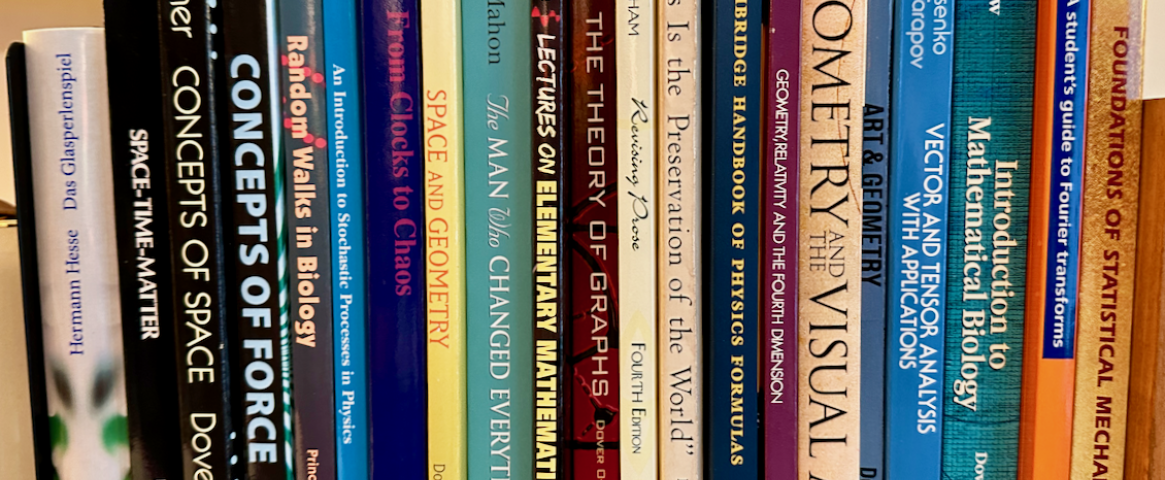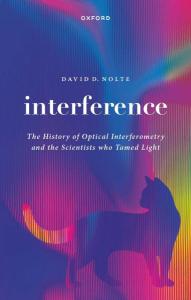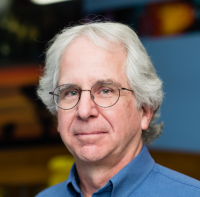
David D. Nolte—Interference: The History of Optical Interferometry & Scientists Who Tamed Light
THE HISTORY OF OPTICAL INTERFEROMETRY
AND THE SCIENTISTS WHO TAMED LIGHT
David D. Nolte
Oxford University Press, September 6, 2023, $40
ISBN-13: 9780192869760
Nolte reports:
As both a practicing physicist and a science popularizer, I am always looking for interesting backstories that bring the science that I work on alive for both specialized and general audiences. To my surprise, I found that the history of the interference of light had great backstories of political intrigue, military campaigns, house arrest, mental illness, personal firestorms, and more.
Few of these stories were widely known, so I wrote a book proposal and sent it to the editor at Oxford University Press who had published two of my previous books. While the internal reviews of the book proposal were not overly positive, the advice of one of the reviewers was perfectly on point. My revised book proposal was stronger and better focused. I am indebted to that anonymous reviewer.
One of the biggest surprises I uncovered during my research was a well-hidden story about Albert Michelson, the first American to receive a Nobel prize. His obsessive attention to his work prompted his wife to have him committed to an insane asylum. He was treated by a forward-looking psychiatrist, a great-grandson of Alexander Hamilton, who brought him back to mental health, to his work, and to his eventual Nobel.Because I work professionally in the field I was writing about—I am a professor of physics and astronomy at Purdue University—I knew some of the scientists and was able to do one-on-one interviews. The stories for the book came together even better than I had hoped.
I called up Alastair Glass of Bell Labs, who told me about his early years developing the field of holographic optics. In another interview, I got great background material on Mats Gustafsson from his post-doc advisor. Gustafsson helped usher in the revolution in high-resolution microscopy in the early 2000s. Sadly, he died of brain cancer in 2011 at age 59.
My advice for aspiring authors in science nonfiction is to start with the university presses.Their editors are a bit less driven by the bottom line and typically work with you to improve the product at all stages.
Contact Info:
- David D. Nolte, 765-494-3013, [nolte@purdue.edu](mailto:nolte@purdue.edu, https://galileo-unbound.blog/
- Interference: The History of Optical Interferometry and the Scientists Who Tamed Light, https://wordpress.com/page/galileo-unbound.blog/4551
- Publicist: Hope Jennings-Grounds, science.books.uk@oup.com
NASW members: will your book be published soon? Promote it by submitting your report for Advance Copy.
Tell your fellow NASW members how you came up with the idea for your book, developed a proposal, found an agent and publisher, funded and conducted research, and put the book together. Include what you wish you had known before you began working on your book, or had done differently.
See https://www.nasw.org/advance-copy-submission-guidelines.
View Advance Copy archives at https://www.nasw.org/member-article/advance-copy.
Thinking of writing a book? If you are a NASW member, you may access a list of more than 200 books and online resources to help you craft your book proposal, find an agent and funding sources, negotiate your contract, learn about self-publishing, publicize and market your book, and more at https://www.nasw.org/article/write-book.
View the recording of a recent Advance Copy Virtual Business Chat, A Primer for Authors on Book Publicity. NASW member login required.
Send book info and questions about book publishing to Lynne Lamberg, NASW book editor, llamberg@nasw.org.
Follow @LynneLamberg on Twitter for news about science/medical books, writing, and NASW authors.
Banner image adapted from original photo by David D. Nolte.
NASW invites publishers and publicists to purchase NASW website ads to promote their authors and books. Visit https://www.nasw.org/node/add/ad to access NASW’s self-service purchasing portal.
Advance Copy
The path from idea to book may take myriad routes. The Advance Copy column, started in 2000 by NASW volunteer book editor Lynne Lamberg, features NASW authors telling the stories behind their books. Authors are asked to report how they got their idea, honed it into a proposal, found an agent and a publisher, funded and conducted their research, and organized their writing process. They also are asked to share what they wish they’d known when they started or would do differently next time, and what advice they can offer aspiring authors. Lamberg edits the authors’ answers to produce the Advance Copy reports.
NASW members: Will your book be published soon? Visit www.nasw.org/advance-copy-submission-guidelines for information on submitting your report.
Publication of NASW author reports in Advance Copy does not constitute NASW's endorsement of any publication or the ideas, values, or material contained within or espoused by authors or their books. We hope this column stimulates productive discussions on important topics now and in the future as both science and societies progress. We welcome your discussion in the comments section below.





